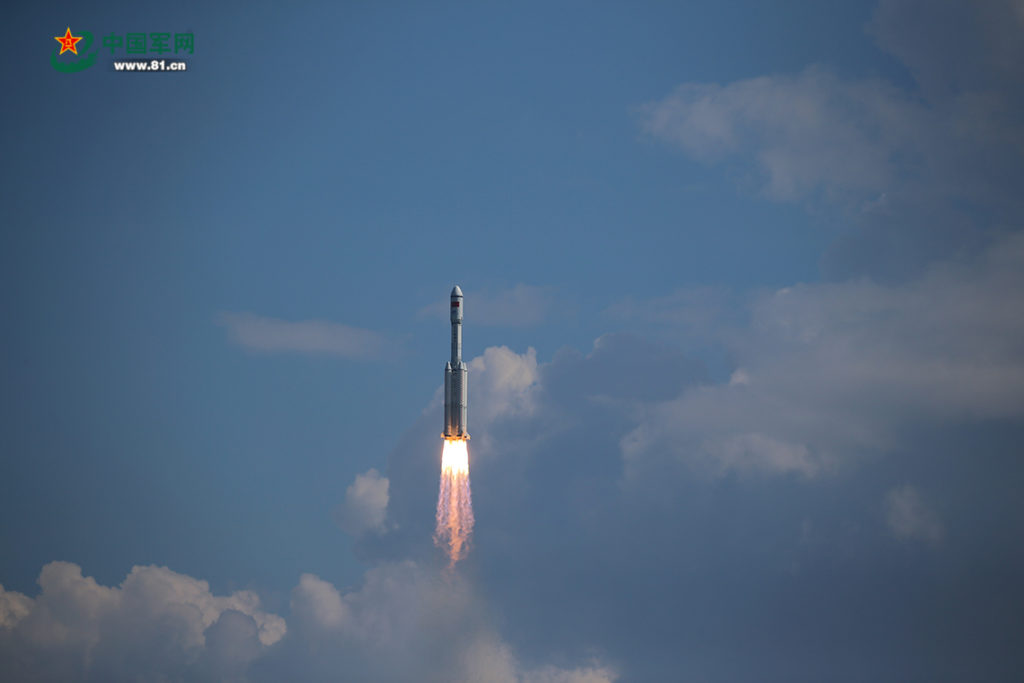中国今年将首射太阳探测卫星
9/28/2021
中国计划今年发射首颗太阳探测卫星,增加对太阳的认识。卫星若发射成功,将标志中国正式进入“探日时代”。
根据澎湃新闻报道,中国航天科技集团八院抓总研制的太阳双超卫星在第十三届中国国际航空航天博览会上首次亮相。
中国科协全国空间探测技术首席科学传播专家庞之浩介绍说,对太阳进行探测有两大意义:一是作为宇宙中目前唯一可以进行高空间分辨表面观测的恒星,而具有天体物理学上的重要性;二是由于人类依存于太阳,所以需要认识太阳的变化及对人类的影响。
太阳给人类带来光的同时也会带来一些不便甚至灾难。耀斑是太阳活动中最剧烈的事件,在几分钟内,一个大的耀斑要释放的能量要比最大地震所释放的多百万倍,能量超过几千个核弹同时爆炸的威力。
太阳的变化深刻地影响着地球上生命的生存。强耀斑和日冕物质抛射等太阳活动事件更是时刻影响着地球的空间环境,干扰通信和导航、威胁航天员的健康,甚至毁坏航天器。因此,对太阳活动的观测和研究不仅具有重要的科学意义,更具有巨大的应用价值。
据了解,中国即将发射的太阳双超卫星的主要科学载荷为太阳Hα成像光谱仪,将国际首次实现空间太阳Hα波段的光谱成像探测。通过对这条谱线的数据分析,可获得太阳爆发时大气温度、速度等物理量的变化,研究太阳爆发的动力学过程及物理机制,显著提高中国在太阳物理领域的国际影响力。
同时,卫星采用超高指向精度、超高稳定度平台 (简称“双超”卫星平台)设计。通过采用平台舱、载荷舱可分离式设计理念,将实现载荷舱的超高精度指向控制,较现有水平提升1-2个数量级。
China to launch its first satellite to the sun, and wants public to name it
- Suggestions for names invited over the coming days for satellite that will launch this year
- Mars rover Zhu Rong was named after the god of fire in Chinese mythology, following a public consultation that drew nearly 40,000 entries
By Mandy Zuo
9/28/2021
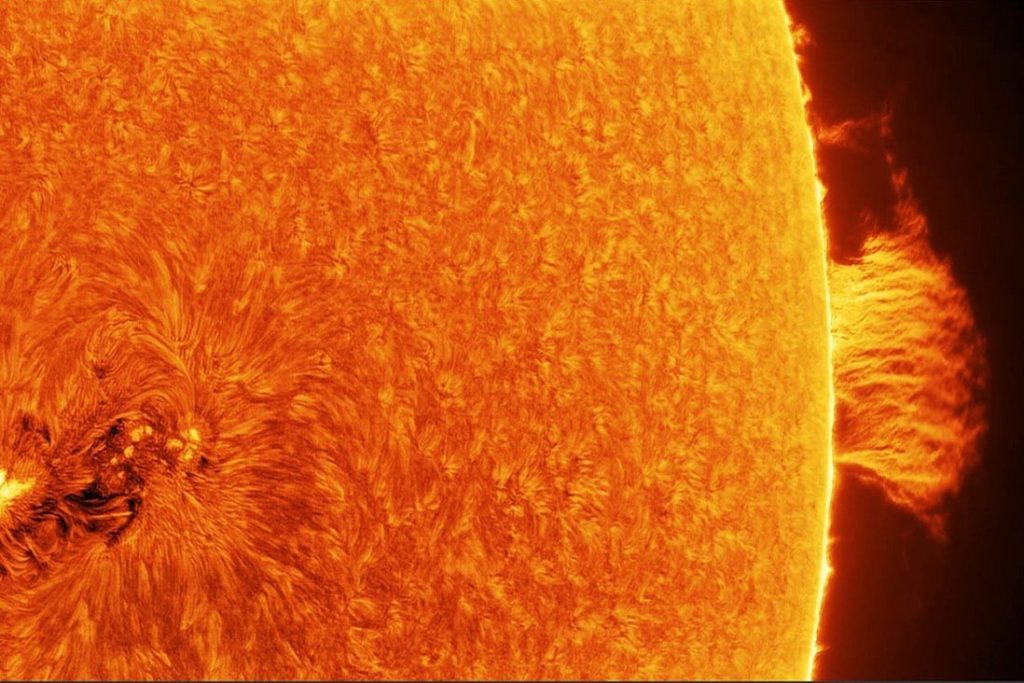
China is launching its first satellite to the sun and asking the public to give it a name, a newspaper under the Ministry of Science and Technology reported at the weekend.
Designed to test China’s first solar observation satellite platform, Chinese H-alpha Solar Explorer (CHASE) will be launched later this year and mark the beginning of the country’s exploration of the sun, Science and Technology Daily said.
Several organisations involved, including its main developer, state-run China Aerospace Science and Technology Corporation (CASC), have invited the public to suggest names for the test satellite by October 7.
An advertisement by CASC said 10 submissions would be shortlisted for consideration by an expert panel, with a winning name announced before the launch day.
CHASE is expected to obtain for the first time full images of the sun in a visible red line called H-alpha waveband. It will complement the Advanced Space-based Solar Observatory (ASO-S), a more comprehensive observing satellite that will be launched in the first half of next year.
Researchers have estimated that solar activity will start a new 11-year cycle this year and peak in 2024 and 2025. The Chinese mission will make detailed records of this activity.
CHASE has been designed to last three years, and ASO-S is expected to operate for at least four, the newspaper said.
Names of China’s spacecraft have long been a hot topic as the country has stepped up its space exploration in the past decade.
They are often named after famous characters from ancient Chinese mythology, such as Chang’e for the lunar mission and Yutu, or Jade Rabbit, for the moon rover. Chang’e is the goddess of the moon and Yutu lives on the moon with her.
This is not the first time Chinese authorities have asked the public to suggest names for a craft.
The name of Zhu Rong – China’s Mars rover and its first rover to land on another planet – came from a public consultation, and is the name of the god of fire in Chinese mythology.
It was picked from nearly 40,000 names suggested by people around the world last year, which the experts whittled down to 10 that were put to an online vote.
中国发射吉林一号高分02D卫星
9/27/2021
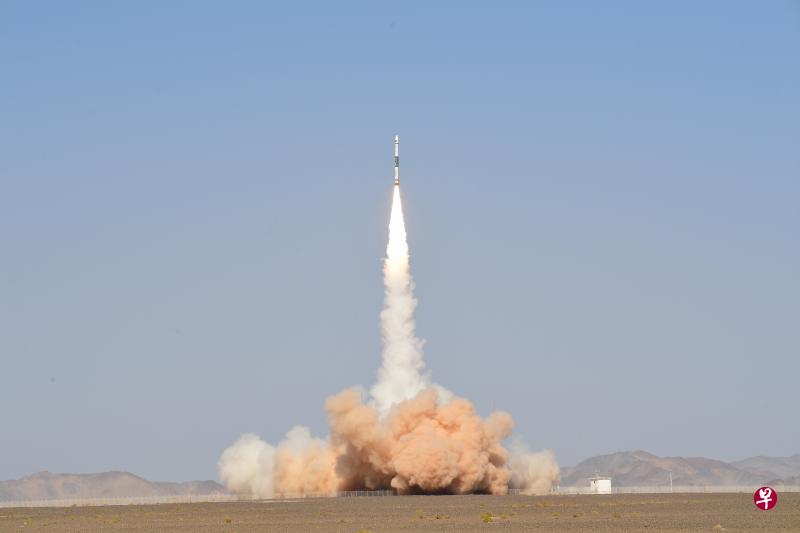
中国今天(27日)14时19分在酒泉卫星发射中心用快舟一号甲运载火箭,成功将吉林一号高分02D卫星发射升空。
综合央视网与环球网报道,此次任务是快舟一号甲运载火箭的第11次飞行。
吉林一号高分02D卫星是由长光卫星技术有限公司研制的高分辨率光学遥感卫星,可获取高空间分辨率对地观测彩色静态影像,将为中国国土资源监测、矿产资源开发、智慧城市建设、林业资源普查、生态环境监测、公共应急卫生等领域提供遥感数据服务。
执行此次发射任务的快舟一号甲火箭是中国航天科工集团有限公司航天三江所属火箭公司推出的一款小型固体运载火箭,具备国际通用接口,主要为300公斤级低轨小卫星提供发射服务,具有飞行可靠性高、入轨精度高、准备周期短、保障需求少、发射成本低等特点。
China launches new satellite
9/27/2021

JIUQUAN, Sept. 27 (Xinhua) — China sent a new satellite into space from the Jiuquan Satellite Launch Center in northwest China at 2:19 p.m. Monday (Beijing Time).
The Jilin-1 Gaofen 02D satellite was launched by Kuaizhou-1A carrier rocket and entered the planned orbit successfully.
This launch marked the 11th mission for the Kuaizhou series carrier rockets.
天舟三号与空间站完成自主快速交会对接
9/20/2021
中国载人航天工程办公室宣布,天舟三号货运飞船入轨后顺利完成入轨状态设置,于20日22时08分,采用自主快速交会对接模式成功对接于空间站天和核心舱后向端口。整个过程历时约6.5小时。
据中新社报道,天舟三号装载了航天员生活物资、舱外航天服及出舱消耗品、空间站平台物资、部分载荷和推进剂等,与天和核心舱及天舟二号组合体完成交会对接后,转入三舱(船)组合体飞行状态。
搭载天舟三号货运飞船的长征七号遥四运载火箭昨天15时10分在文昌航天发射场点火发射。约597秒后,飞船与火箭成功分离,进入预定轨道。15时22分,飞船太阳能帆板顺利展开且工作正常。
中国成功发射天舟三号货运飞船
9/20/2021
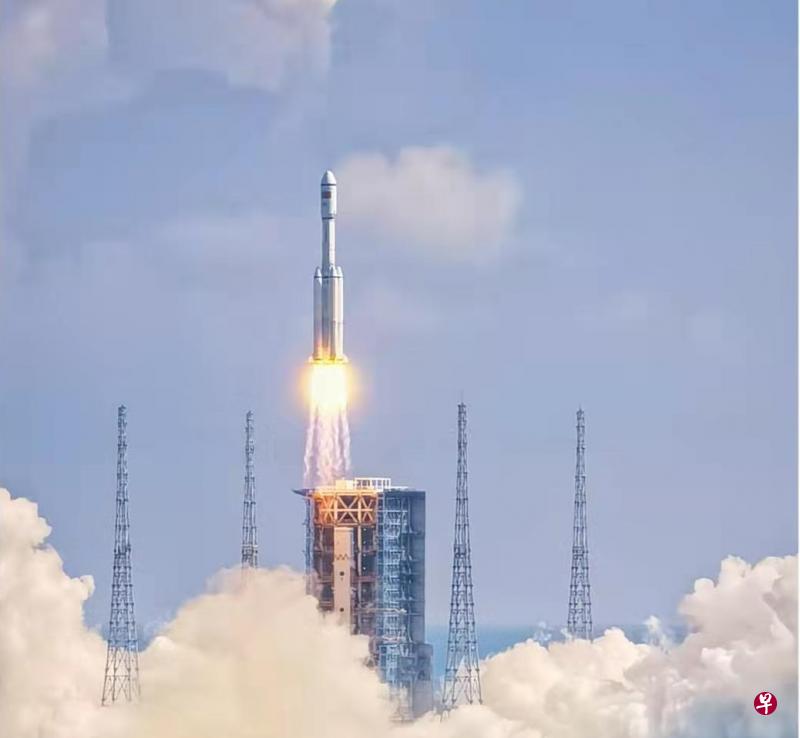
中国今天(20日)下午3时10分成功发射天舟三号货运飞船。
据中国央视新闻报道,中国载人航天工程办公室公布,搭载天舟三号货运飞船的长征七号遥四运载火箭,在中国文昌航天发射场点火发射。飞船之后与火箭成功分离,进入预定轨道,飞船太阳能帆板过后也顺利展开且工作正常,发射取得圆满成功。
天舟三号货运飞船下来将与在轨运行的中国空间站组合体进行交会对接。
Sep 20, 2021
Express delivered from Earth to space! China successfully launched Tianzhou-3 to its space station. The 6-ton supplies will support Shenzhou-13 manned mission in October, which is expected to last for six months.
这艘货运飞船将为下月神舟十三号载人飞船进入天和核心舱做准备。有消息说,航天员王亚平可能入选神舟十三号飞船乘组,成为进入中国空间站的首名女航天员。
天舟三号货运飞船的主要任务是运输货物和补加推进剂,为神舟十三号载人飞船乘组在空间站的生活和工作提供物资保障。
China successfully launches Tianzhou-3 for second space station supply mission; to support upcoming six-month Shenzhou-13 manned mission
9/20/2021
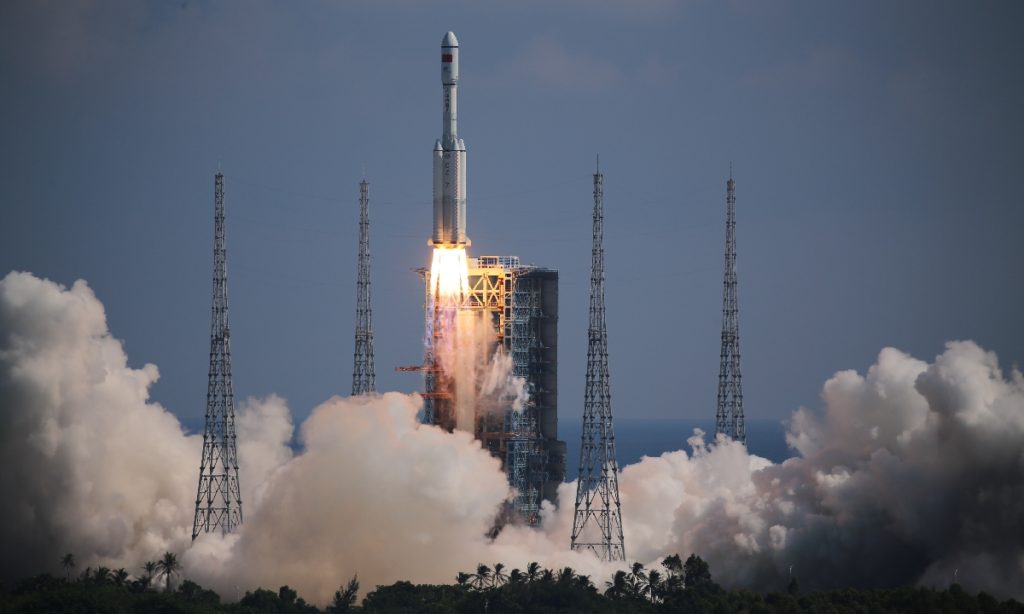
Knock knock. This is your delivery-man Tianzhou-3, and please confirm your package receipt and may you have a happy Mid-Autumn Festival!
Carrying the Tianzhou-3 cargo spacecraft, the Long March-7 Y4 rocket lifted off from Wenchang Space Launch Center located in South China’s Hainan Province on Monday afternoon, one day ahead of this year’s Mid-Autumn Festival – one of the happiest family reunion holidays for the Chinese people.
The lift-off gave the nearby forest of palm trees quite a shake in the Hainan tropical haze, the same way it excited many who came to witness the historic moment at the Wenchang beach on Monday afternoon.
As the fourth of 11 missions scheduled to build China’s three-module space station, Tianzhou-3 mission came shortly after the historic Shenzhou-12 mission in which three taikonauts spent a record 90 days in the China’s space station core module and safely returned to Earth on Friday.
After a flight time of around 597 seconds, the spacecraft separated with the rocket and entered preset orbit. At 3:22 pm, the solar panels onboard the spacecraft smoothly unfolded, with all functions in normal operating condition, marking the success of the third launch of a spaceship to the space station core cabin, according to the China Manned Space Agency (CMSA.)
The Monday mission is tasked to bring supplies, equipment and propellant to get Tianhe ready for the next three-taikonaut Shenzhou-13 mission in October for their six-month stay. It is the Tianzhou spacecraft series second supply delivery run to the orbiting Tianhe module following a first by the Tianzhou-2 mission launched on May 29.
Sep 20, 2021
据中国载人航天工程办公室消息,北京时间2021年9月20日15时10分,搭载天舟三号货运飞船的长征七号遥四运载火箭,在中国文昌航天发射场点火发射,约597秒后,飞船与火箭成功分离,进入预定轨道,15时22分,飞船太阳能帆板顺利展开且工作正常,发射取得圆满成功。
后续,天舟三号货运飞船将与在轨运行的空间站组合体进行交会对接。这是中国载人航天工程的第20次发射任务,也是长征系列运载火箭的第 389次飞行。
Although the launch of Tianzhou-2 by Long March-7 Y3 rocket was a successful one, it experienced two delays and met problems of leaking of injected fuels.
The Tianzhou-2 cargo spacecraft was originally slated to be launched at around 1:30 am on May 20 and to head to China’s Tianhe space station core cabin, which was launched into orbit on April 29, for a supply run. However, the launch was scrubbed narrowly following an announcement from CMSA on the early morning of May 20 for “technical reasons.”
Research teams were dispatched immediately to check system functions, while the command center prepared for an attempt to recover the mission, which had been set to a day later in the early morning of May 21. However, after liquid oxygen was refueled eight hours before the scheduled launch time, abnormal signals once again occurred.
Drawing lessons from the previous launch, the Long March-7 rocket developer with the China Academy of Launch Vehicles have further optimized the quality examination process before and after the lift-off and make detailed emergency plans. This is to ensure the launch mission is on time with zero errors, the academy told the Global Times on Friday.
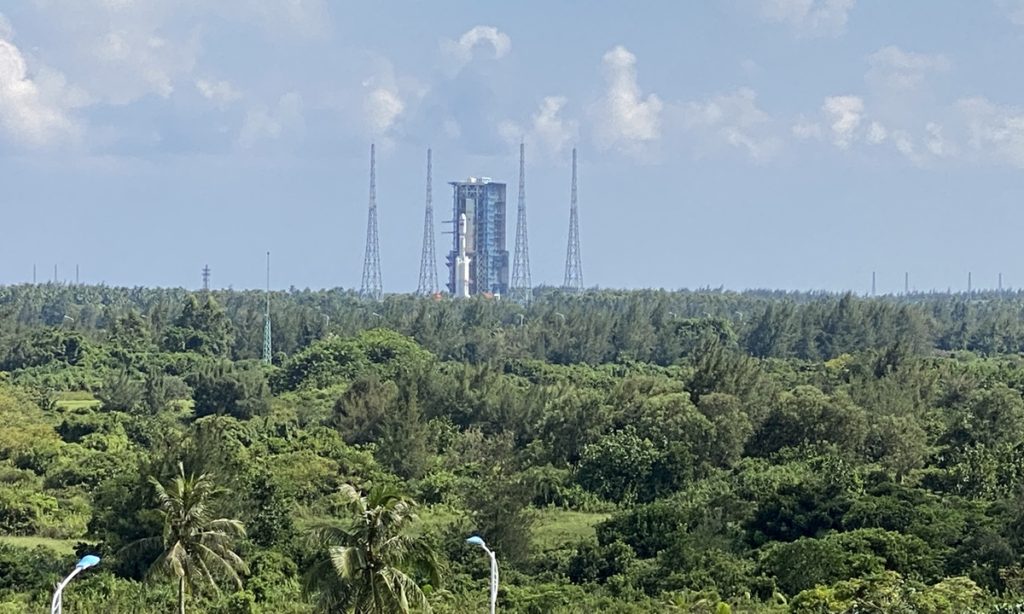
To sustain Taikonauts’ longer stay in space
Global Times learned from the mission insiders that Tianzhou-3 mission will lay ground for the upcoming October Shenzhou-13 mission, just the way Tianzhou-2 mission prepared for the epic Shenzohu-12 manned spaceflight mission. The October mission is expected to last six months, renewing the record of the longest stay in space for a Chinese astronaut in a single mission.
The spacecraft developer China Academy of Space Technology (CAST) told the Global Times in a statement that just like the Tianzhou-2, Tianzhou-3 will carry a range of goods including daily necessities, drinking water, gas supplies, consumables for extravehicular activities [spacewalk,] as well as experiment payloads.
Yang Sheng, Chief designer of the Tianzhou-3 spacecraft system, told the Global Times that “As Tianzhou-3 mission will sustain taikonauts’ 6-month-long stay in space, the density of cargo is greater on Tianzhou-3 than on Tianzhou-2, and Tianzhou-3’s loading capability is also higher than that of Tianzhou-2. The number of packages onboard Tianzhou-3 is 25 percent more than on Tianzhou-2.”
There were 6.8 tons of supplies onboard the Tianzhou-2, including some 160 parcels of goods and two tons of propellants, CAST told the Global Times previously.
One of the most expensive items to be onboard the Tianzhou-3 would be one piece of spacesuit specially designed for spacewalk missions that weighs some 90 kilograms, the CAST highlighted in the Friday statement. Tianzhou-2 had sent two pieces of spacesuits for Taikonauts’ spacewalk with each weighing some 100 kilograms.
Also, onboard Tianzhou-3 is the replacement parts of the urine treatment system to ensure the device is in the best condition for the Shenzhou-13 crew, Global Times learned from the system developer 206 Research Institute of the Second Academy of the China Aerospace Science and Industry Corp (CASIC).
“The system has processed some 600 liters of urine into over 500 liters of water which was used to generate oxygen and for clean-up purpose during the Shenzhou-12 crew’s three-month stay. Shenzhou-13 crew will install those parts when moving into the China’s space station core module,” Cui Guangzhi, the project leader, told the Global Times.
The Tianzhou-3 cargo spacecraft is expected to also execute a fast and automatic rendezvous and docking with the Tianhe core module, just like the Tianzhou-2 spacecraft did in May, which took some eight hours after lift-off,according to Deng Kaiwen, assistant of the Tianzhou-3 cargo spacecraft’s chief commander from the spacecraft developer
Compared to the Tianzhou-1’s rendezvous and docking with Tiangong-2 in 2017, which took about two days, Tianzhou-2 took a mere eight hours to achieve the feat in May.
Tianzhou-3 will dock to the Tianhe module from the rear. Before such development, CMSA updated on Saturday, Tianzhou-2 had flown around Tianhe and conducted an automatic docking to the craft’s front, which took four hours.
Shenzhou-13 will later rendezvous with the Tianhe module and conduct a R-Bar or vertical docking with the orbiting craft, which Shenzhou-12 had practiced on Friday before heading back to Earth.

天舟三号货运飞船已与火箭成功分离并进入预定轨道
路透新闻部
9/20/2021
路透北京9月20日 – 中国载人航天工程办公室周一称,北京时间15时10分,搭载天舟三号货运飞船的长征七号遥四运载火箭,在文昌航天发射场点火发射,约597秒后,飞船与火箭成功分离,进入预定轨道。
该办公室官网刊登的新闻稿(here)并称,15时22分,飞船太阳能帆板顺利展开且工作正常;后续,天舟三号货运飞船将与在轨运行的空间站组合体进行交会对接。
新闻稿并指出,这是中国载人航天工程的第20次发射任务,也是长征系列运载火箭的第389次飞行。
科技日报报导称,按计划安排,天舟三号将与空间站核心舱和天舟二号组合体实现自主快速交会对接。
报导并指出,天舟三号任务是空间站关键技术验证及建造阶段的第二次货物运输应用性飞行。(完)
天舟三号满载出发,它都带了啥?
科技日报记者 付毅飞
9/20/2021
9月20日,由中国航天科技集团五院抓总研制的天舟三号货运飞船在海南文昌发射场成功发射。按计划安排,它将与空间站核心舱和天舟二号组合体实现自主快速交会对接。
记者从五院了解到,天舟三号任务是空间站关键技术验证及建造阶段的第二次货物运输应用性飞行。飞船为满载状态,运载了可支持3名航天员6个月在轨驻留的物资,以及空间站备份设备、空间科学载荷等,还携带了补加推进剂等上行物资。该飞船还具备并网供电能力,在停靠期间可以为空间站提供供电支持。
“天舟三号携带的货物主要包括航天员生活物资、航天饮水、气体补给、卫生用品、应急储备物资、出舱消耗品、维修备件和实验载荷等,与天舟二号基本一致。”五院天舟三号总指挥冯永介绍说。
航天员在空间站内生存需要适宜的大气环境,所以天舟三号运送的一样重要的货物,就是气瓶。这种气瓶用特种复合材料制成,可以充至300倍大气压力,1瓶氧气就能供航天员很长时间使用。
除了空气,太空生活也离不开宝贵的水资源。五院货运飞船系统总体主管设计师王冉介绍,天舟三号这次带了多组水箱,供航天员饮用和使用。这些水箱均采用了轻质、柔软材料制成的“水囊”包装,不仅可以保证饮水安全,还可以在饮水用尽后更好地收纳。
此次货物中最贵重的,要属舱外航天服了。该装备重达90多公斤,价格达到千万元量级,堪称世界上最贵的“衣服”。货运飞船系统为此专门设计了舱外服支架,保证其在运输过程中不会损坏。
除了上述特殊物品,天舟三号携带的大多数货物都是用标准化、型谱化货包装载的。这些货包不仅具有良好的力学承载性能,还有抗菌、防霉、阻碍燃烧、无有害气体挥发等多个优点。鲜为人知的是,这些货包材料的灵感竟源于螃蟹壳。王冉介绍,研制人员从螃蟹壳里提取了一种特有成分,经过特殊工艺,特殊制作,研发出性能优异的货包材料。
在货物装载方面,天舟三号充分继承了天舟二号的经验,并进行了优化和改进。五院天舟三号货运飞船系统总体主任设计师杨胜表示,相比天舟二号,天舟三号货物装载的密度更大,货物在发射场安装的效率更高。由于天舟三号所运物资要满足航天员6个月的使用需求,对整船装载能力提出了更高要求,装载的货包数量相比天舟二号增加了25%。
天舟三号货运飞船发射任务取得圆满成功
来源:中国军网
9/20/2021
天舟三号货运飞船发射任务取得圆满成功
我国载人航天工程发射任务取得20战20捷
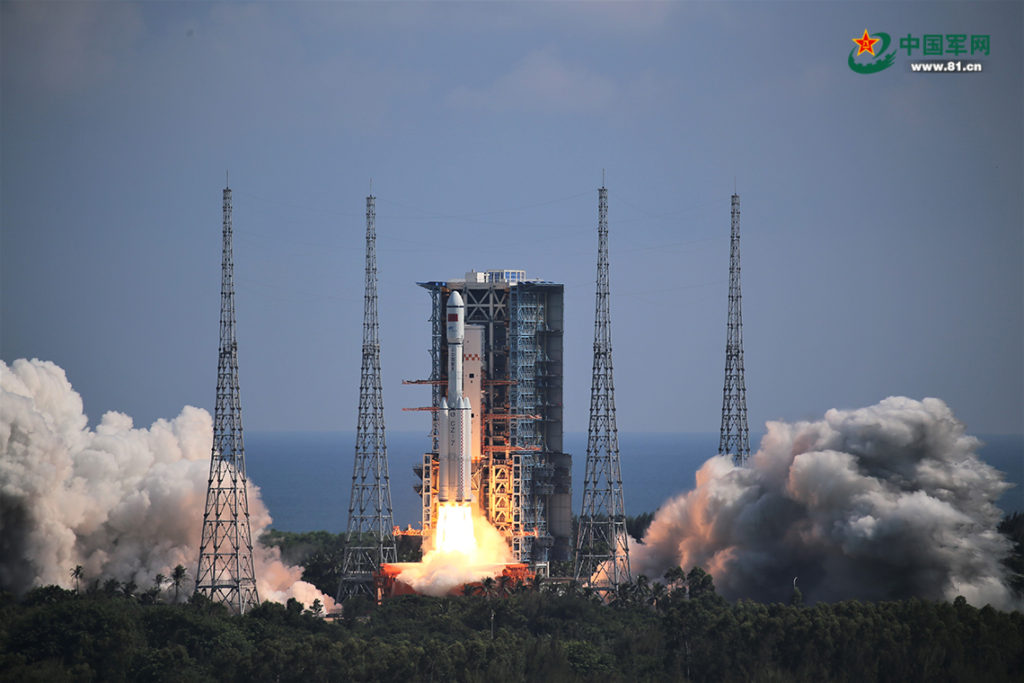
中国军网文昌9月20日电(记者董兆辉) 据中国载人航天工程办公室消息,北京时间2021年9月20日15时10分,搭载天舟三号货运飞船的长征七号遥四运载火箭,在我国文昌航天发射场点火发射。约597秒后,飞船与火箭成功分离,进入预定轨道,15时22分,飞船太阳能帆板顺利展开且工作正常,发射取得圆满成功。后续,天舟三号货运飞船将与在轨运行的空间站组合体进行交会对接。这是我国载人航天工程的第20次发射任务,也是长征系列运载火箭的第389次飞行。
(摄影:胡煦劼)

